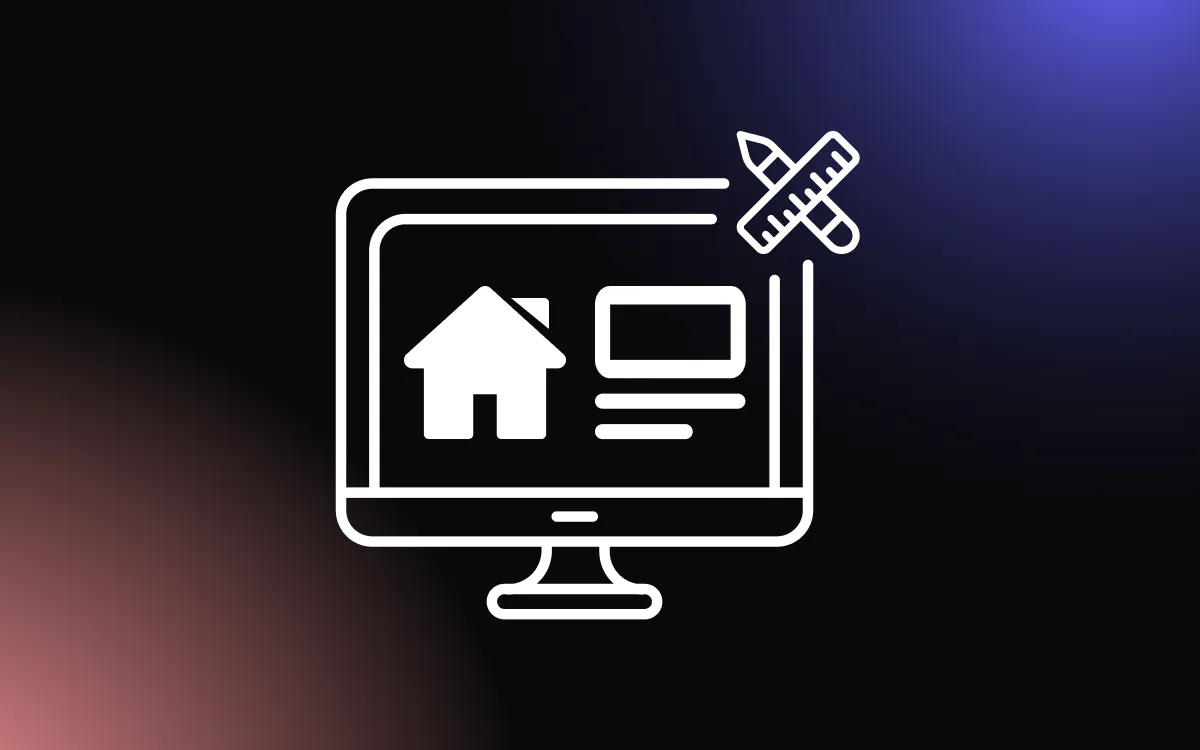
Web design is not just about aesthetics; it's about communication. Creating a unique voice in web design is akin to finding the soul of your brand and expressing it visually and interactively.
This voice sets you apart from competitors and resonates with your target audience, creating a memorable digital experience.
This guide aims to walk you through the steps of developing a distinctive voice in your web design, from understanding your brand identity to translating it into design elements that speak directly to your users.
The Role of Voice in Web Design
Defining 'Voice' in the Context of Design
In the realm of web design, 'voice' refers not just to the literal spoken elements of a website but also to the overall tone and personality conveyed through its content and aesthetics. This voice is a critical component of a brand's identity, resonating throughout the website's text, images, layout, and even interactive elements.
It's the unique character and style that makes a brand or website relatable and memorable to its audience. For instance, a website for a law firm might adopt a formal, authoritative voice, while a youth-focused brand might use a casual, energetic tone.
The Interplay Between Brand Voice and Visual Design
The voice of a brand should seamlessly integrate with its visual design to create a cohesive and immersive user experience. This synergy is vital in communicating the brand's message and values. The choice of colors, typography, imagery, and even the layout contribute to the voice.
For example, a luxury brand might use elegant fonts, a monochromatic color scheme, and minimalist layouts to convey sophistication and exclusivity. Conversely, a children's educational site might use bright colors, playful fonts, and interactive elements to express fun and approachability.
The key is ensuring that the visual elements do not clash with the brand's voice but rather complement and enhance it, creating a unified and compelling online presence.
Why a Unique Voice Matters in Web Design
Standing Out in a Crowded Digital Landscape
In today's digital era, where users are bombarded with an overwhelming amount of content, having a unique voice in web design is crucial for standing out. A distinctive voice helps differentiate a brand from its competitors, making it more memorable and recognizable.
This uniqueness is not just about being heard; it's about being heard distinctly. When a website speaks in a voice that's true to its brand personality, it cuts through the noise and clutter of the digital landscape, capturing the attention of its target audience more effectively. This distinctiveness can be a deciding factor for users when they are choosing between multiple services or products.
Building Authentic Connections with Users
A unique voice in web design goes beyond aesthetics; it's about forging a deeper, more authentic connection with users. When a website communicates in a way that resonates with its audience — whether it's professional, whimsical, serious, or playful — it establishes a sense of trust and relatability.
This connection is vital in turning casual visitors into loyal users. A website that speaks in a genuine, consistent voice reflects a brand that cares about its users and understands their needs, aspirations, and challenges. This authenticity is key in building lasting relationships with an audience.
Enhancing Brand Recall and Loyalty
A unique voice contributes significantly to brand recall and loyalty. When users interact with a website that has a consistent and distinctive voice, they are more likely to remember the brand. This recall is not just about remembering a brand name; it's about recalling the experience, the feelings evoked, and the message conveyed.
A strong, unique voice can leave a lasting impression, making users more likely to return to the website and recommend it to others. In the long run, this loyalty translates into a stronger brand presence and, ultimately, business success. By consistently using a voice that aligns with their values and mission, brands can create a loyal customer base that not only believes in their products or services but also in what they stand for.
Steps to Craft a Unique Voice in Web Design
Step 1: Understand Your Brand's Core Values and Mission
The first step in crafting a unique voice for your web design is to deeply understand your brand's core values and mission. This foundational knowledge acts as a guiding star for all your communication and design choices.
Ask yourself: What does your brand stand for? What are its key messages? Understanding these elements ensures that your web design's voice is not just distinctive but also true to your brand's identity.
Step 2: Define Your Target Audience and Their Preferences
Knowing your audience is crucial in determining how you communicate with them. Different demographics and psychographics respond to different voices and styles.
For instance, a younger, more dynamic audience might appreciate a casual, energetic voice, while a more mature, professional audience might prefer a formal, straightforward approach.
Understanding your audience's preferences, pain points, and expectations helps in tailoring a voice that resonates with them.
Step 3: Develop a Consistent Tone and Style
Consistency in tone and style across your website ensures a cohesive user experience. Whether it's the language used in your blog posts or the style of your headlines, maintaining a consistent voice helps in reinforcing your brand identity.
This consistency should extend beyond textual content to include the overall feel of the website – is it professional, friendly, innovative, or something else?
Step 4: Choose Visual Elements that Complement Your Voice
Visual elements like color schemes, typography, and imagery must align with your brand's voice.
For example, a brand with a playful voice might use bright colors and whimsical fonts, while a more serious brand might opt for muted colors and clean, simple typography.
The key is to ensure that these visual elements work together to reinforce the voice you're aiming to project.
Step 5: Infuse Your Voice in All Design Elements (from CTAs to Imagery)
Every element on your website, from call-to-action buttons to images, should reflect your brand's voice. This means choosing words, shapes, and colors that speak in your brand's tone.
Even technical elements like navigation menus and contact forms offer an opportunity to reinforce your brand voice. For instance, a friendly, conversational brand might use a casual tone in its form prompts or error messages.
Step 6: Gather Feedback and Iterate
Finally, it's important to gather feedback on how your target audience perceives your website's voice. Use surveys, user testing, and analytics to understand how visitors interact with your site and how they feel about the brand voice you've crafted.
Be open to making adjustments based on this feedback. Remember, crafting a unique voice is an iterative process that evolves with your brand and its audience.
Examples of Websites with Distinct Voices
1. Innocent Drinks
- Distinct Voice: Playful, friendly, and humorous.
- Why It's Notable: Innocent's website uses a conversational and witty tone throughout, making the brand feel approachable and fun. Their use of language is consistent across all platforms, reinforcing their brand identity.
2. Mailchimp
- Distinct Voice: Quirky, creative, and slightly irreverent.
- Why It's Notable: Mailchimp's brand voice is unique in the tech industry, standing out with its fun and offbeat personality. This is reflected in their choice of words, images, and overall site design.
3. Cards Against Humanity
- Distinct Voice: Bold, irreverent, and unapologetic.
- Why It's Notable: Known for its controversial and humorous style, the Cards Against Humanity website maintains this voice, ensuring a consistent experience from product to online presence.
4. Dollar Shave Club
- Distinct Voice: Direct, humorous, and a bit edgy.
- Why It's Notable: Dollar Shave Club uses a straightforward and humorous tone that resonates with its target audience, making the brand memorable and engaging.
5. Oatly
- Distinct Voice: Conversational, witty, and socially conscious.
- Why It's Notable: Oatly’s website reflects its commitment to sustainability and social issues, using a tone that's both informative and engaging, often breaking the fourth wall.
6. Wendy's
- Distinct Voice: Sassy, bold, and a bit cheeky.
- Why It's Notable: Wendy's is known for its distinctive brand voice on social media, and this extends to its website. The tone is playful and bold, often engaging directly with customers in a conversational style.
Tools and Resources to Help Define Your Design Voice
Brand Voice Workshops and Templates
Developing a brand voice can be a complex task, but there are workshops and templates available to guide you through the process. Brand voice workshops, often led by branding experts, can provide personalized guidance and insights tailored to your specific brand and industry.
These workshops can help you explore different facets of your brand personality, tone, and messaging. Additionally, online templates for brand voice chart creation can be a great starting point. These templates typically offer frameworks for defining and documenting your brand voice, ensuring consistency across all your communications.
Design Inspiration Platforms
When it comes to defining the visual aspect of your design voice, platforms like Behance, Dribbble, and Pinterest are invaluable resources. These platforms showcase a wide range of design work from around the globe, offering a wealth of inspiration.
You can explore current trends, classic styles, and innovative approaches to web design. Pay attention to how different designs communicate through color, typography, layout, and imagery. This can help you identify elements that resonate with your brand's voice and how you might incorporate them into your own design.
Feedback and Survey Tools
Feedback is crucial in refining and validating your design voice. Tools like SurveyMonkey, Google Forms, and Typeform allow you to create surveys to gather feedback from your target audience or stakeholders.
Ask specific questions about how they perceive your brand voice through your website's design elements. User testing platforms like UsabilityHub or UserTesting can provide insights into how real users interact with your website and perceive your brand.
This direct feedback can be instrumental in fine-tuning your design voice to ensure it effectively communicates your brand's personality and resonates with your audience.
Challenges in Maintaining a Consistent Voice
Evolving Brand Goals and Values
One of the primary challenges in maintaining a consistent voice in web design is the evolution of a brand's goals and values. As a company grows and matures, its objectives, market position, and core values can shift.
This evolution is natural and often necessary, but it can lead to inconsistencies in how the brand presents itself. The key is to regularly revisit and potentially revise the brand voice guidelines to ensure they align with the current vision and mission of the company.
This process should be thoughtful and strategic, ensuring that any changes enhance the brand's voice rather than dilute it.
Expanding Target Audiences
As brands expand into new markets or demographics, their target audience may become more diverse.
This diversity can pose a challenge in maintaining a consistent voice. Different audience segments might have varying preferences and expectations regarding communication style, humor, and formality.
Balancing these needs while keeping a unified brand voice requires a deep understanding of each audience segment and careful crafting of messages that resonate broadly while still feeling personal and relevant.
Keeping Up with Design Trends Without Losing Voice
The world of web design is constantly evolving, with new trends emerging regularly. While it’s important to keep your website looking fresh and modern, there's a risk of losing your unique brand voice in the pursuit of trendiness.
The challenge lies in integrating new design trends in a way that complements and enhances the brand voice, rather than overshadowing it.
This might mean adopting certain elements of a trend that align with your brand's personality while discarding aspects that don't. It requires a discerning eye and a strong understanding of what your brand stands for, ensuring that any design updates contribute to a cohesive and consistent brand experience.
Tips for Amplifying Your Voice in Web Design
Collaborate with Content Creators
One effective way to amplify your brand's voice in web design is by collaborating closely with content creators.
Writers, designers, and marketers should work together to ensure that every piece of content — from blog posts to infographics — resonates with your brand's unique voice. This collaboration ensures consistency across different types of content and platforms.
Encourage content creators to immerse themselves in your brand's style, tone, and values. Regular brainstorming sessions and workshops can help keep everyone aligned and inspired, fostering a creative environment where your brand's voice is at the forefront of all content creation.
Regularly Review and Update Design Elements
Your website is often the first point of contact between your brand and potential customers, making it crucial to keep its design elements fresh and aligned with your brand voice. Regular reviews and updates of your website's design can help maintain this alignment.
This doesn't necessarily mean a complete overhaul; even small tweaks in color schemes, typography, or layout can significantly impact how your voice is perceived.
Ensure that these elements consistently reflect your brand's personality, whether it's professional, playful, innovative, or anything in between. Regular updates also show that your brand is dynamic and evolving, which can be appealing to modern audiences.
Stay True to Your Brand, Even as Trends Change
While it's important to stay current with web design trends, it's even more crucial to remain true to your brand's identity. Trends come and go, but your brand's voice should be a constant, distinguishing factor in a crowded digital space.
When considering new design trends, evaluate whether they enhance or dilute your brand voice. For instance, if minimalism is trending but your brand's voice is bold and vibrant, you might choose to incorporate only select elements of minimalism that don't compromise your brand's essence.
Remember, the goal is not to conform to every trend but to communicate your unique identity effectively and memorably. By staying true to your brand, you create a sense of authenticity and trust with your audience, which is invaluable in the long term.
The Future of Voice in Web Design
The Rise of Voice User Interfaces (VUIs) and Their Impact on Design
The future of web design is poised to be significantly influenced by the rise of Voice User Interfaces (VUIs). As voice-activated devices like smart speakers and virtual assistants become increasingly prevalent, web designers must adapt to incorporate voice as a primary mode of interaction.
This shift requires a rethinking of traditional design elements; visual cues might give way to auditory ones, and navigation could be structured around voice commands rather than clicks or taps. The challenge for designers will be to create experiences that seamlessly integrate voice and visual elements, ensuring a cohesive and intuitive user experience.
This integration will not only enhance accessibility but also open up new possibilities for interaction and engagement.
The Growing Emphasis on Authenticity and Individuality in Design
In tandem with technological advancements, there's a growing trend towards authenticity and individuality in web design. Users are seeking more personalized, conversational experiences that reflect human speech and interaction patterns.
This shift impacts not just the tone and style of written content, but also the overall design approach. Designers are increasingly tasked with creating unique, voice-driven experiences that resonate on a personal level with users.
This could mean more adaptive interfaces that respond to user preferences or content that adjusts based on user interactions and feedback. As brands strive to stand out and connect more deeply with their audiences, the role of a distinct, authentic voice in design becomes ever more critical.
This trend towards individuality and personalization in design is set to redefine the ways in which brands communicate and engage with their audiences online.
Conclusion
Crafting a unique voice in web design is a journey of aligning your brand's core values, message, and personality with the visual and interactive elements of your website. It's about creating a consistent, engaging, and authentic experience that captivates and connects with your audience.
Remember, your website is often the first point of contact between your brand and potential customers. By following the steps outlined in this guide, you can ensure that this first impression is not only impactful but also a true reflection of what your brand stands for. Keep experimenting, keep refining, and watch as your website's unique voice becomes a powerful tool in your brand's digital arsenal.



